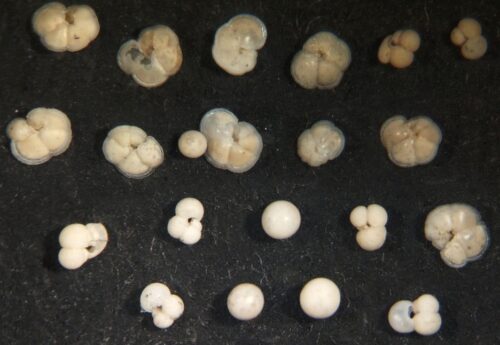Image courtesy of Daniel Gaskill.
When it comes to climate change, there has been a persistent discrepancy between what computer models predict and what history tells us. Though computer models forecast a rise in temperature at the poles, these predictions are nowhere as extreme as what previous fossil studies had suggested: Earth’s poles may have been as warm as the tropics.
Daniel Gaskell, a micropaleontologist and expert in a field that studies microfossils, recently earned his PhD from Yale in the Department of Earth and Planetary Sciences. He emphasized the importance of ensuring that computer models are accurate since their predictions are used prevalently.
Gaskell investigated the fossils of an amoeba-like single-celled organism called foraminifera to assess temperature patterns over the past ninety-five million years. Foraminifera shells form fossils found on the seafloor. When foraminifera are alive, their shells incorporate prevalent oxygen isotopes into their calcium carbonate. Water temperature determines what oxygen isotopes, or different forms of the oxygen element, are available for incorporation.
Using foraminifera shells from different time periods and locations as measurements for historical global temperature, Gaskell found that current computer models are more accurate than previously believed. The foraminifera data disagreed with past studies: temperatures at the poles did not match temperatures at the equator when global temperatures were hotter. “Our data are saying that the poles did get warm… but didn’t get nearly as warm as these previous reconstruction methods would predict,” Gaskell said.
Gaskell emphasized that while it is unlikely that the Arctic will become a tropical destination, climate change is still an important issue with many uncertainties.

